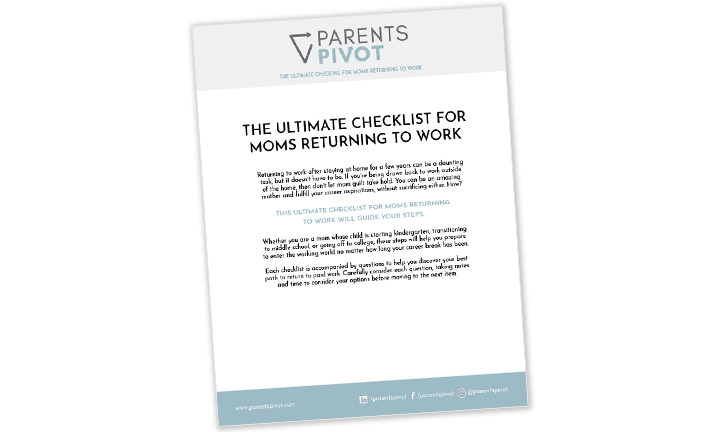Did you leave the workforce this past year because of COVID? If so, you are not alone! Whether due to the demands of juggling e-learning and work, increased family stressors, concerns about health and safety, or other reasons, many moms made the same difficult decision to step away from work and focus solely on family. These are all valid reasons, and you should not feel an ounce of guilt over it. But now you may be wondering what to do when you want to return to work with a gap in your work history.
Whether it’s this year or years down the road, if you left the workforce because of COVID, there are steps you can take to ensure a smooth transition back to work when the time is right.
Steps To Take To Make the Return To Work Easier
Protect your long-term career while you’re away from the workforce by keeping the following tips in mind:
Stay professionally active. Keep up with professional groups, engage in relevant conversations, and volunteer whenever possible to stay current. Even if they’ve stopped meeting in person, many groups are still active online and as a bonus this is remote work so you will have remote work experience to add to your resume even if it is unpaid.
Continue to network. Be prepared when you do decide to return to work by keeping connections warm. Reach out to key people, participate in online organizations, and build relationships in your industry. Connect with your former coworkers on LinkedIn now while the relationships are still fresh or send an email every so often to say hello goes a long way! Even if they also left the workforce. Follow industry thought leaders on LinkedIn to stay informed about industry trends.
Be proactive in your self-marketing. Keep your LinkedIn and resume up-to-date now so it’s easier to pick up when you’re ready to return to the workforce. It will be easier to get all of those metrics to put on your resume now vs. a year or two down the road.
Use the Return to Work Checklist! Subscribe the Parents Pivot newsletter to receive a free download of the Ultimate Return to Work Checklist so you’ll know exactly what to do when you decide it’s time to pivot back to work.
How To Know When It’s Time To Return
One of the most difficult aspects of returning to work after an extended career pause, for any reason, is knowing when it’s time. Returning to the workforce after leaving because of COVID is no different. How will you know when the time is right?
First of all, making the decision to return to work is a personal one. People return to paid work for a variety of reasons. The most common ones that I hear are financial security and to do meaningful work but others include professional achievement goals, being a role model for your children, and wanting to do something different when the nest empties.
Having conversations with your partner/s in parenting will help you think and talk through financial goals, household responsibility expectations, and role changes. Ask them to weigh in, listen to their responses, and work together to come to a decision that benefits the family as a whole.
Only you (and your family) can determine what’s best for you.
Whenever you decide the time is right, Parents Pivot is here for you! Schedule a phone call with Anna for a consultation to determine if 1:1 or group coaching is right for you!





